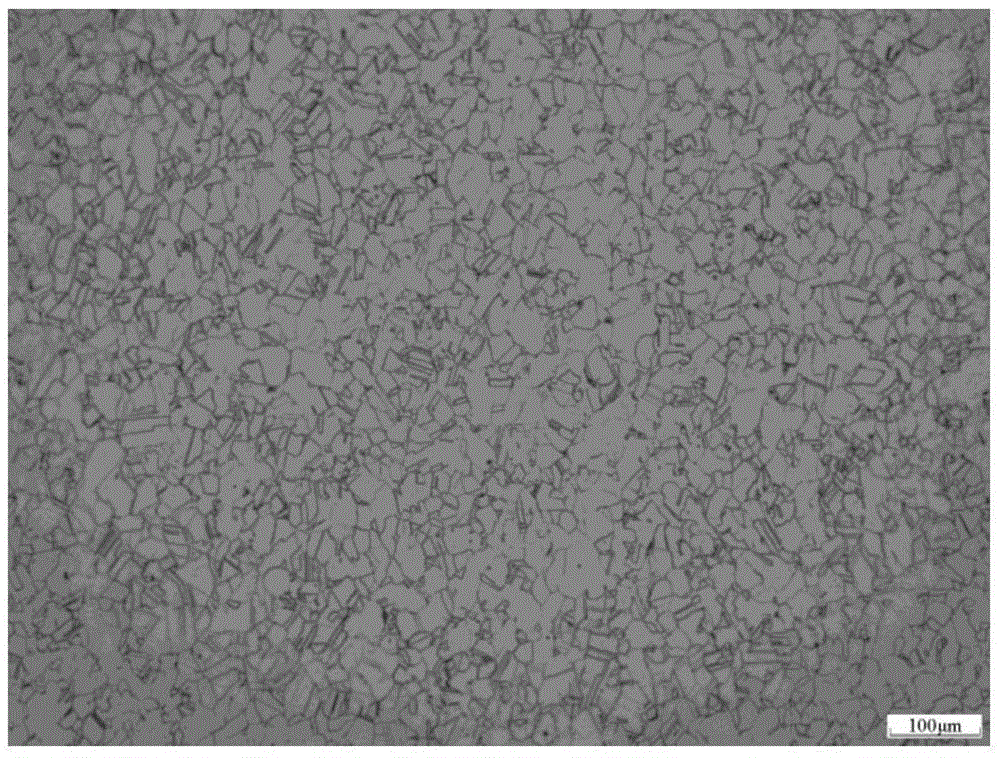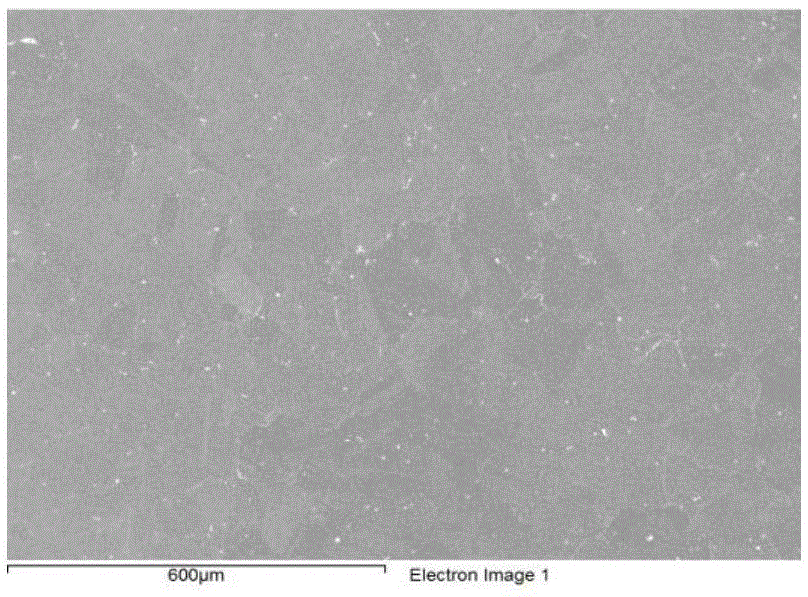Composite strengthening and toughening technology of high-tensile Fe-Ni-Cr-based high-temperature corrosion-resisting alloy
A fe-ni-cr, corrosion-resistant alloy technology, applied in the field of forging and heat treatment of high-strength Fe-Ni-Cr-based high-temperature corrosion-resistant alloys, can solve the problems of low mechanical strength, limited popularization and application, and low strength. Achieve the effect of saving process cost, shortening process flow and high strength
- Summary
- Abstract
- Description
- Claims
- Application Information
AI Technical Summary
Problems solved by technology
Method used
Image
Examples
Embodiment 1
[0037] The first step, vacuum induction smelting: Fe-Ni-Cr alloy ingots meeting the requirements of Table 2 were prepared by alloy proportioning and vacuum induction smelting, using ZG-0.05 50kg vacuum induction furnace, vacuum degree 0.1Pa, pouring temperature control At 1440°C, it is directly cast into an electrode rod in vacuum, weighing 50kg.
[0038] Table 2 Example 1 Fe-Ni-Cr alloy composition range
[0039]
[0040] The second step, electroslag remelting: After the alloy electrode rod is ground and trimmed, electroslag remelting is carried out in a double-arm electroslag furnace. The diameter of the alloy electroslag remelting ingot is generally controlled at φ400mm.
[0041] The third step is high-temperature diffusion annealing: the alloy electroslag ingot is heated up with the furnace, the annealing temperature is selected at 1167°C, and the holding time is 1h.
[0042] The fourth step, forging: use a high temperature of 1161°C to open the billet, and then approp...
Embodiment 2
[0045] The first step, vacuum induction melting: Fe-Ni-Cr alloy ingots meeting the requirements of Table 3 were prepared by alloy proportioning and vacuum induction melting, using ZG-0.05 50kg vacuum induction furnace, vacuum degree 0.1Pa, pouring temperature control At 1450°C, it is directly cast into an electrode rod in vacuum, weighing 50kg.
[0046] Table 3 Example 2 Fe-Ni-Cr alloy composition range
[0047]
[0048] The second step, electroslag remelting: After the alloy electrode rod is ground and trimmed, electroslag remelting is carried out in a double-arm electroslag furnace. The diameter of the alloy electroslag remelting ingot is generally controlled at φ400mm.
[0049] The third step is high-temperature diffusion annealing: the alloy electroslag ingot is heated up with the furnace, the annealing temperature is selected at 1164°C, and the holding time is 1h.
[0050] The fourth step, forging: use a high temperature of 1157°C to open the billet, and then appropri...
Embodiment 3
[0053] The first step, vacuum induction melting: Fe-Ni-Cr alloy ingots meeting the requirements of Table 4 were prepared by alloy proportioning and vacuum induction melting, using ZG-0.05 50kg vacuum induction furnace, vacuum degree 0.1Pa, pouring temperature control At 1460°C, it is directly cast into an electrode rod in vacuum, weighing 50kg.
[0054] Table 4 Example 3 Fe-Ni-Cr alloy composition range
[0055]
[0056] The second step, electroslag remelting: After the alloy electrode rod is ground and trimmed, electroslag remelting is carried out in a double-arm electroslag furnace. The diameter of the alloy electroslag remelting ingot is generally controlled at φ400mm.
[0057] The third step is high-temperature diffusion annealing: the alloy electroslag ingot is heated up with the furnace, the annealing temperature is selected at 1158°C, and the holding time is 1h.
[0058] The fourth step, forging: use a high temperature of 1154°C to open the billet, and then appropri...
PUM
 Login to View More
Login to View More Abstract
Description
Claims
Application Information
 Login to View More
Login to View More - R&D
- Intellectual Property
- Life Sciences
- Materials
- Tech Scout
- Unparalleled Data Quality
- Higher Quality Content
- 60% Fewer Hallucinations
Browse by: Latest US Patents, China's latest patents, Technical Efficacy Thesaurus, Application Domain, Technology Topic, Popular Technical Reports.
© 2025 PatSnap. All rights reserved.Legal|Privacy policy|Modern Slavery Act Transparency Statement|Sitemap|About US| Contact US: help@patsnap.com



